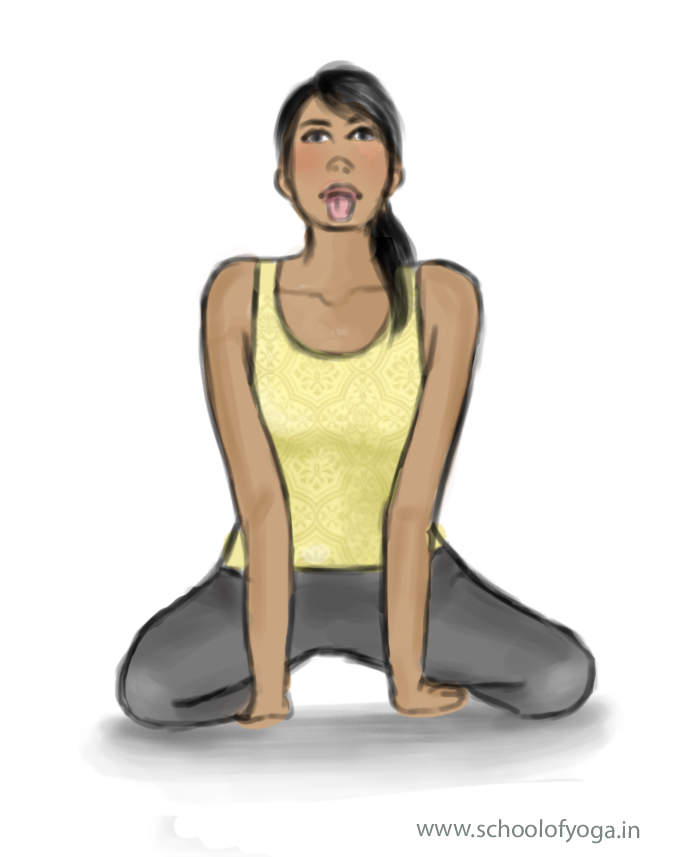
School of Yoga explains Simhasana (Lion Pose)
Simhasana technique:
- Sthithi (starting position): Sit on a clean mat in an airy and quiet room. Sit in Vajrasana.
- Place your palms on the floor, fingers turned towards the legs, little fingers touching each other.
- Move the knees apart as far as possible.
- Lean forward and let the elbows rest on either side of the abdominal wall.
- Let the face fall forward slightly, raise the chin up, open the mouth and hang the tongue out.
- Breathe through the mouth, taking deep breaths as in Bhastrika, but with less intensity.
- The classical pranayama of use is bhastrika pranayama.
- The following dristhi’s (gaze) is recommended – gaze at the chakras (vishuddhi, mooladhara or svadishtaana). But keep it steady for the period of asana.
- Breathe calmly, keeping the mind silent. Be conscious of your anchor within the self. Command your body to relax, moving from the top of the body to the extremities. Imagine stress leaving your body with each exhalation. Release your mind. Let it not grasp anything or any thought.
- Start with 5 minutes and increase upto 15 minutes.
- Do not try to achieve perfection on day 1. Make sure your body is able to take the strain. Over time, the body will become supple and perfection will be achieved.
Simhasana benefits:
- Simhasana is recommended for relieving stress in the face and chest.
- Very good for improving reproductive organs and relieving menstrual disorders.
- This asana is a primer asana for Mayurasana
- This asana is also useful for practicing for all the bandhas.
Simhasana:contraindications
- None
Some noteworthy points on Simhasana:
Internal Links: Dharma (conditioning), Stress and Situational Awareness, Prana, Asana overview 1, Asana Overview 2, Asana Focus or gazing, Pranayama, Yama, Niyama, Padmasana
External Links: Prana, Chakra, Pancha Tattva, Pancha Prana, Pancha Kosha, Nadi,
- Why Chin Mudra? = Simhasana is about collecting the disparate energies or prana into the person. Prana flows within and outside the body. An open palm would mean that the prana which moves to the extremities is unable to return which makes the flow unidirectional. However, with chin mudra, this loop is closed, like any good electrical circuit, resulting in uninterrupted flow of prana around the person, increasing retention and charge of prana within the system.
- This asana is considered to be one of the 32 most important asanas by all ancient texts.